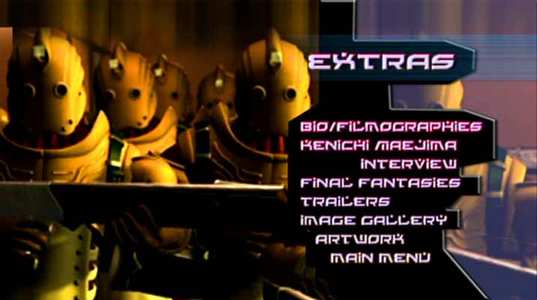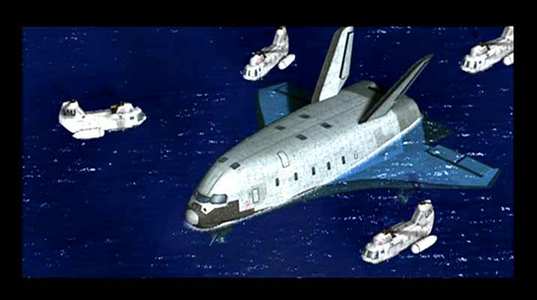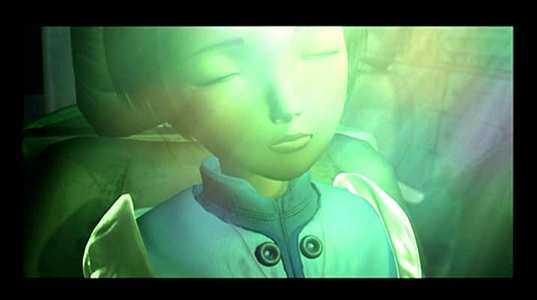Review of A.LI.CE
Introduction
It`s a little odd that the Japanese animation industry has been so reluctant to jump on the computer animation bandwagon. Certainly computers have been used in the animation process, but just to increase the efficiency of the cel animation process. For many years US companies like Pixar and Dreamworks have worn the 3D digital animation mantle. Yet it was in the summer of 2000 that a Japanese financed film took the animation world by storm. Final Fantasy: The Spirits Within with its mega-budget, boasted amazing lifelike characters and environments. It was a quantum leap beyond the likes of Toy Story and A Bugs Life in terms of complexity and artistic achievement. Nothing comes from a vacuum however, and Japan has a history of 3D digital animated movies, brief though it is. In 1999, the first feature length digital animation made in Japan was A.LI.CE, directed by Kenichi Maejima and written by Shenmue creator, Masahiro Yoshimoto
Alice Hayashi was the winner of the Lunar Sweepstakes, and was set to be the youngest ever person to go to the moon. The shuttle malfunctions though, and crashes at the North Pole. Soon she and the shuttle`s robotic stewardess Maria are escaping from a horde of faceless Stealth Troopers. Rescued by Yuan who lives alone in the North, she learns that she has travelled thirty years into her future, the world has been depopulated and the survivors are ruled over by Nero. Nero`s computer, the SS10X controls the stealth troopers that terrorise the world. Fighting for humanity`s freedom from the machines is the Liberation Front, a group of fanatical and committed humans. Alice soon finds that she is caught between the two implacable foes, and even more mysteriously she is the key to the future of the world.

Video
A.LI.CE was also another technical first for Japan, in that it was distributed for DLP digital projection, the first such Japanese film, much as George Lucas` The Phantom Menace in the west. So as you would expect, the transfer onto DVD is immaculate. A.LI.CE is presented here on a Region 0 disc with a 2.00:1 approx NTSC transfer and there are no issues with the transfer whatsoever.
The film is another matter though. This film was released in 1999, a year before Final Fantasy yet looks five years older. There are aliasing issues on many of the characters and objects, the image is often pin sharp with no blurring whatsoever associated with distance or motion, the character design is simplistic and facial expressions are occasionally exaggerated. The environments and backgrounds lack detail, and complex animation like clothing or hair is completely lacking. Remember even five years ago, CGI played a big part in mainstream cinema, with Lucas bringing Jar Jar to annoying life, so I`m assuming that this film`s graphical shortcomings are down to budget. When you recall statistics like $1 million spent on modelling Aki Ross` hair for Final Fantasy, you begin to understand the `solid` hairstyles apparent here. Having said that, where this film excels is in lighting effects. There are scenes in this film with complex lighting that are accomplished splendidly, scenes in firelight or in the Aurora Borealis that give the animators a chance to show off.

Audio
There are DD 5.1 Japanese and English soundtracks for A.LI.CE. The surround is quite effective and immersive, with plenty of opportunity to be livened up by some action. However I did feel there were moments when the dialogue was drowned out by all the mayhem, especially in the opening chase scene. This affected both the original Japanese soundtrack and the English dub. Like most recent anime, the English translation is very well accomplished and is certainly as enjoyable as the original. Incidentally there are two English subtitle tracks on this disc, the only difference being that one has larger text than the other.

Features
This disc has a nice selection of extras to complement the main feature. You`ll find text filmographies for Kenichi Maejima, Masahiro Yoshimoto, and Hirosuke Kizake (Art Director). There are trailers for A.LI.CE and Blue Remains, and four pages of artwork devoted to both. There is also a 25-image gallery of stills and production design sketches for A.LI.CE
More substantially there is an interview with Kenichi Maejima. This has optional subtitles, is presented in 4:3 and lasts 37 minutes. In it he talks about the film and trialling it with DLP projection. He also covers the technical issues of digital animation and the difference in techniques from traditional cel animation among other things.
Final Fantasies is a lecture from Jonathan Clements, author of The Anime Encyclopaedia who talked at `London Sci-Fi 2003` about the history of digital animation in Japan. It should be noted that this 31-minute presentation comprises edited highlights from his talk; he`ll introduce clips that aren`t shown on the disc. Still, it`s an interesting and entertaining discourse. It should be noted that the sound is out of sync for this extra. Initially annoying, but it isn`t too distracting although subtitles would have helped here.

Conclusion
It all boils down to whether A.LI.CE is entertaining, and it certainly manages to keep the attention for eighty minutes. The story is a familiar one, a sort of Terminator in reverse, where Alice is sent into the future to see what world will result because of her actions. This Alice`s looking glass is a time machine, and the future she awakens in is far from wondrous, a machine rules the world and is hunting her down, the leader of the freedom fighters is far from heroic himself and as events unfold, she finds that she is hardly a bystander and is in fact linked to the heart of what causes the future to unfold. The storytelling style and the characters are traditional anime, despite their computer-generated forms and the mixture of light philosophy and action is nothing new.
If anything the story is let down by thin characterisation all around, it`s as if the imagery is meant to compensate for character development. No one really makes an impression after eighty minutes, although the robot Maria goes though some eye-pleasing changes in look. When the story ends, you`re left wondering what has really been accomplished, unfortunately the answer is not much, and the reason is mainly a lack of interaction between the characters. They are all on their own journey and just don`t impact on each other.
When it comes to computer animation, as Jonathan Clements states on this disc it`s best to play to your strengths. If you are limited in some way, craft your story around that limitation; tell the story in a world that is achievable with the tools at hand. One particular computer animation from around this time was Reboot, taking place completely inside a computer where various CG characters battled for supremacy, it was brilliantly accomplished and thoroughly entertaining. What A.LI.CE attempts to do is to tell a story using computer animation in the real world, with human characters. It was an attempt to do too much with too little. Even Final Fantasy with its multi-million dollar budget was far from an unqualified success. In many ways the quality of the animation is surprising, even for a comparatively low budget film. I get the impression that there is or was a lack of sharing when it comes to digital animation. As taken as a whole at this time, CGI was capable of tremendous things in terms of cinematic environments, animated characters or special effects. Think about the dinosaurs in Jurassic Park, the re-imagined Star Wars trilogy, even Terminator 2, all of these made before A.LI.CE. Even when it comes to computer games, the level of animation in many cutscenes from some four or five year old games surpasses the character design and image quality shown in some scenes here. I find myself wondering how this film would have looked if the manpower was there and the skills were shared.
The animation in A.LI.CE is variable although even at its best it`s never groundbreaking. Nevertheless it looks pretty enough, but is let down by an ephemeral story and uninspiring characterisation. It`s certainly one to watch if you are a fan of anime, but I`m not too sure it`s worthy of a replay.
Your Opinions and Comments
Be the first to post a comment!